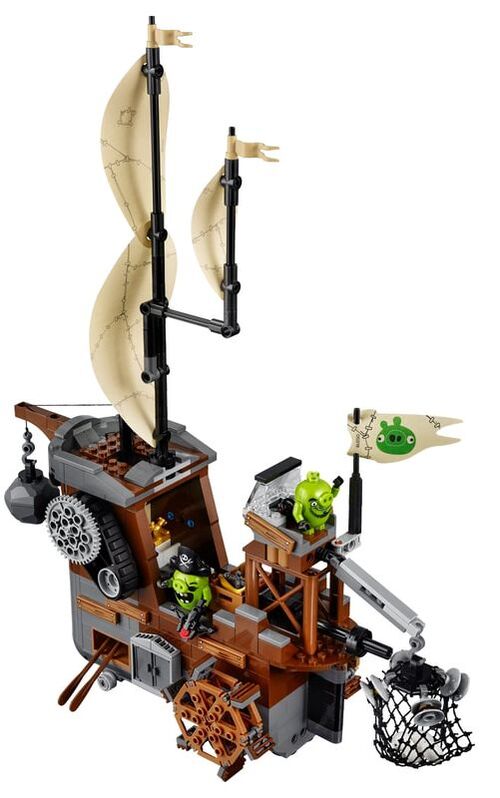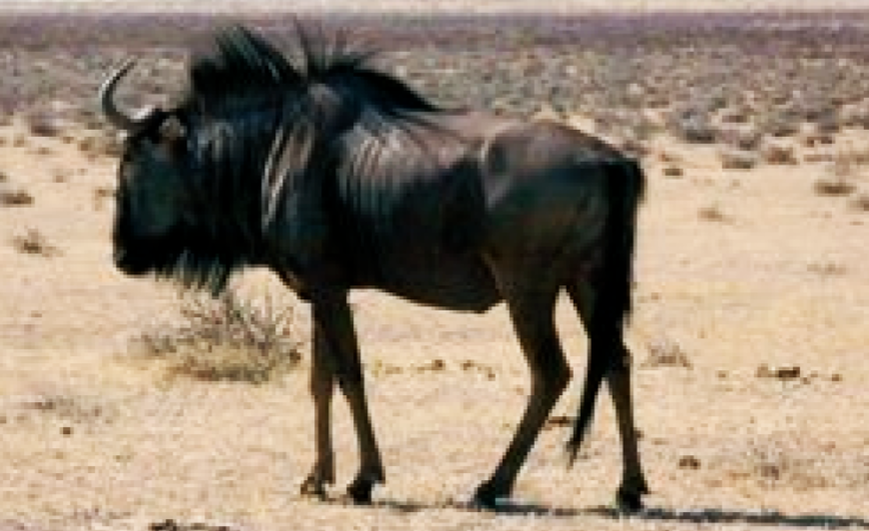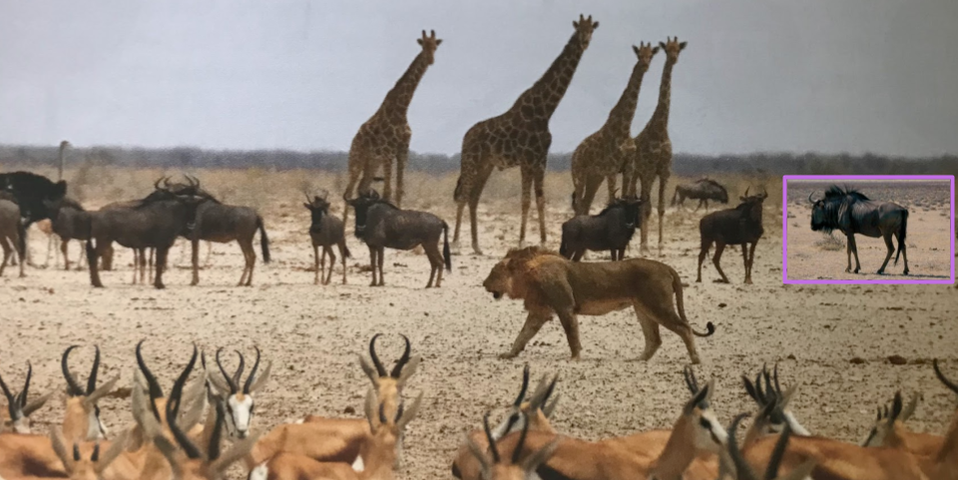|
We begin life and immediately join the universal process of gathering information about the world around us through our senses. We develop instruments to allow our eyes to look further into the heavens than we ever thought possible, to see wavelengths of light previously unfathomable, and to look closer at the microscopic building blocks of life and matter than imaginable. Some of our observations inspire us to appreciate the beauty and complexity of the world around us. Other observations inform us about amazing natural phenomena that was otherwise hidden in the familiar. Because observations build the foundation of science, it is important for science enthusiasts to learn to observe well
We also performed a similar task with a detailed picture of a blue wildebeest near a remote watering hole in Africa. As we panned back we discovered that there were a number of different animals together at the watering hole and that the watering hole had all but dried up. This created a teachable moment about seeing our focused observations of the blue wildebeest in the context of space--among a community of animals together. There was more to understand about the blue wildebeest like its comparative size and maturity compared to its peers at the watering hole and who it appeared to share water resources with. Another important attribute of allowing context to help you observe well is in relation to time. This involved a series of before and after pictures and making observations about predator-prey relationships, herd movement and protection, and relative land speed of indigenous wildlife. 1 Corinthians 13:12 says, "Now we see things imperfectly, like puzzling reflections in a mirror, but then we will see everything with perfect clarity. All that I know now is partial and incomplete, but then I will know everything completely, just as God now knows me completely." This scripture reminds us that our ability to see perfectly is limited on this Earth but praise be to God that (1) we can see well enough to glorify Him and (2) that there is coming a day when we will see perfectly.
0 Comments
|
INSTRUCTORDr. Kenneth Fleming leads this class in the Route 104 Science Airstream on Monday mornings. ArchivesCategories |



 RSS Feed
RSS Feed